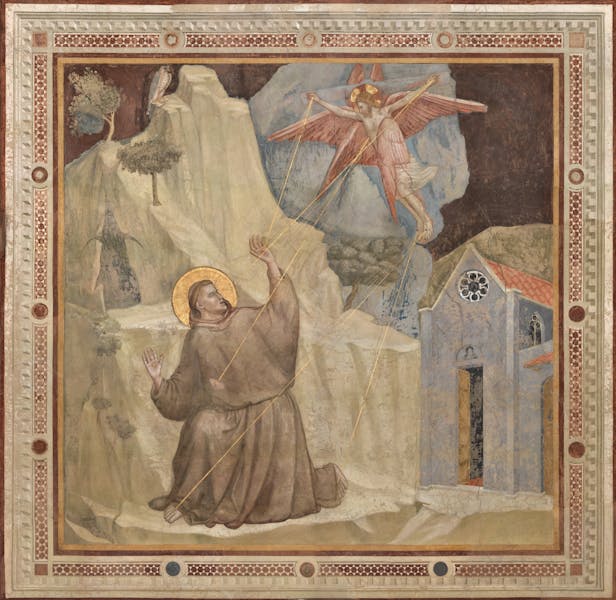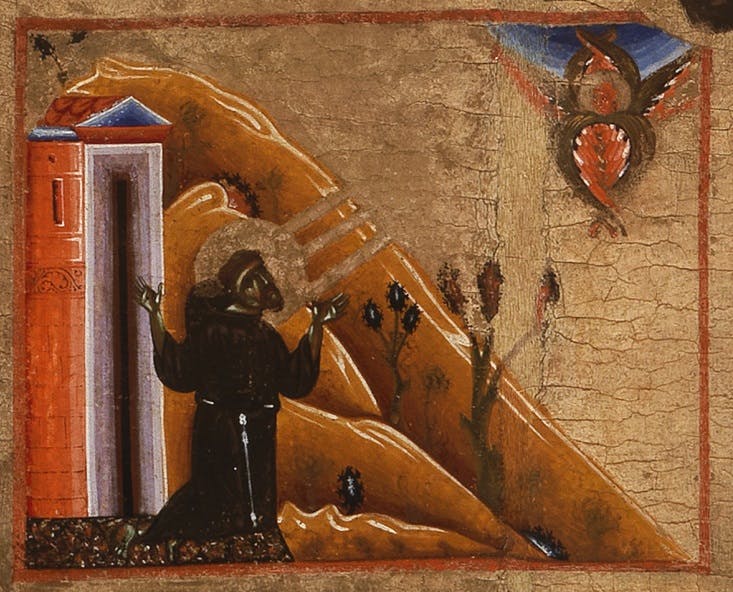
Bardi Chapel
NOTICE: We inform visitors that the restoration site with scaffolding is being erected in the Bardi Chapel. Therefore the Giotto frescoes with the Stories of San Francis will not be visible for the duration of the restoration period.
This chapel is dedicated to St. Francis and has been associated from the outset with the Bardi, a powerful family of bankers who held the patronage of four chapels in Santa Croce. In architectural terms it dates back to the first phase of the present church's construction, thus 1295-1310.
The decoration is likely to have been commissioned by Ridolfo de' Bardi from Giotto, who certainly painted it after 1317 and possibly before the end of 1321, condensing his Stories from the Life of St. Francis into seven episodes – three per wall, plus a panel with the Stigmatisation of St. Francis over the arch above the entance and only visible from the transept.

Two polychrome stained-glass windows complete the decorative scheme. The first, above the arch with the Bardi family crest, has three pairs of Franciscan saints and popes, while the second, behind the altar, has lost the stained-glass originally designed for it and now contains a 14th century window brought here from the Velluti Chapel after World War II.
The altarpiece with Stories from the Life of St. Francis attributed to Coppo di Marcovaldo was placed here in 1595. It has been temporarily moved to the transept pending the restoration of Giotto's frescoes.

The original railing or grille enclosing the chapel and highlighting its "private" nature, reflecting a typically medieval view of the world, was removed c. 1613.
Changing tastes have left their mark on the chapel. The frescoes were whitewashed over in the 18th century while the funerary monument of the architect Giuseppe Salvetti was built into the left-hand wall in 1812 and that of Niccolò Gaspero Paoletti was built into the wall opposite in 1818. The frescoes were rediscovered in the mid-19th century, the funerary monuments were removed to the Salviati Chapel and the paintings were restored by Gaetano Bianchi who repainted their damaged or missing parts. His restoration, conducted in 1853, is commemorated in an inscription to the right of the altar. Leonetto Tintori restored the frescoes once again in 1958–9, but this time he recuperated only the original work.